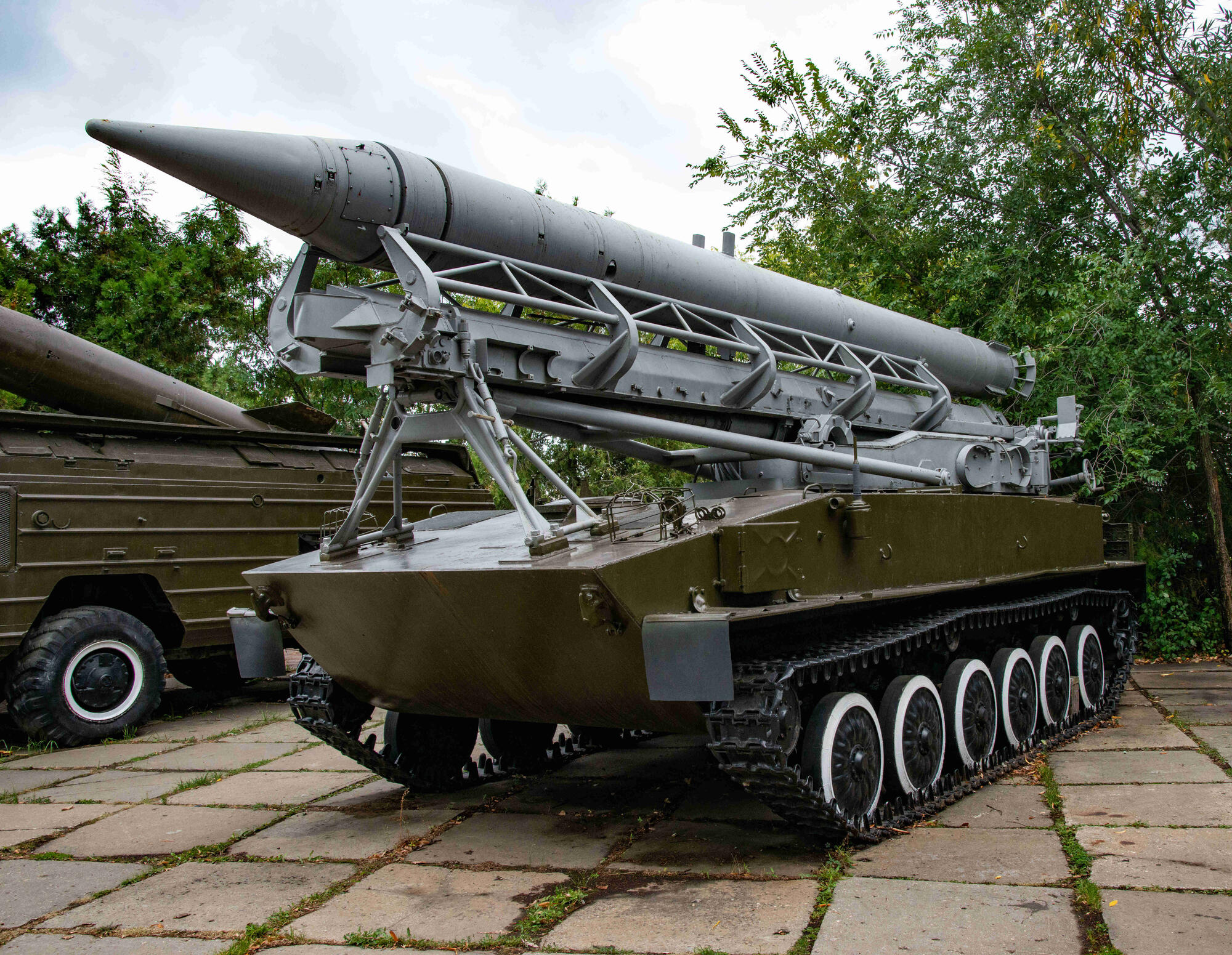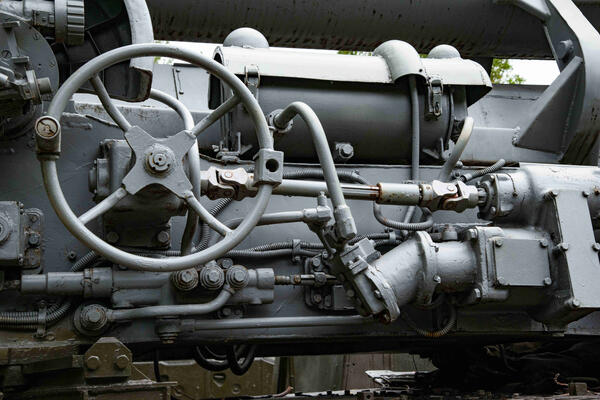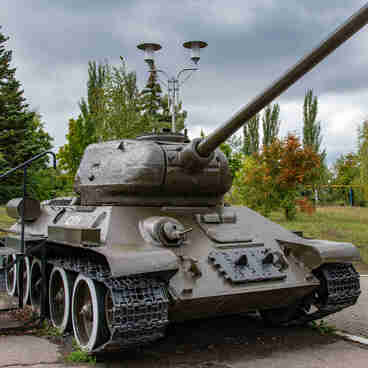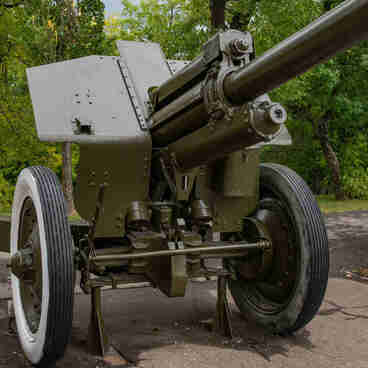The 2P16 self-propelled launcher was developed at the Central Research Institute No. 58 in Gorky, present-day Nizhny Novgorod. The structural elements, components and units of the self-propelled launcher were based on the PT-76B tank.
The equipment of the rocket launcher was mounted on the roof of the hull. Thus, the vehicle was not fitted with a turret. A lifting mechanism and jacks were fitted in the stern part of the vehicle. Unlike its prototype, the weight increased from 14.5 to 17.5 tons. This vehicle was not amphibious, and therefore water-jet outlets were not installed.
In order to achieve the specified tactical and technical characteristics in terms of the weight of the launcher, the armor was somewhat weakened. Instead of 13 mm armor plates, 10 mm plates were installed. The center of gravity shifted towards the stern part as a result of removing the turret and loading the stern part of the vehicle.
The load on the return rollers became extremely uneven, so engineers developed a reinforced undercarriage with support rollers — two on each side — as well as screw mechanisms for track tensioning. By 1964, more than 400 guns had been produced.
The weapon system included 3R9 unguided missiles with a high-explosive warhead and 3P10 with a nuclear one. When preparing the vehicle for rocket launches, the rods of the power cylinders, which were located on the sides of the hull, were pushed out and rested on the levers of the balancers’ axes of the second suspension units. The launcher’s body was lifted, partly reducing pressure on the suspension.
The other two supporting points were the crew-type jacks, which were placed in the stern part of the launcher. In addition to increasing the stability of the vehicle during rocket launch, the jacks were used for horizontal positioning. This was necessary to ensure the correct installation and placement of the launcher in accordance with the calculated angles when preparing the rockets for launch.
The R-113 radio station was used for external communication, and the R-120 intercom was used for internal communication. The significant disadvantages of the launcher were its low fire accuracy and low traveling speed. The launcher got overloaded on dirt roads at a speed of 16–18 km/h. That was unacceptable for the nuclear warhead. The launcher was decommissioned in 1982.
The equipment of the rocket launcher was mounted on the roof of the hull. Thus, the vehicle was not fitted with a turret. A lifting mechanism and jacks were fitted in the stern part of the vehicle. Unlike its prototype, the weight increased from 14.5 to 17.5 tons. This vehicle was not amphibious, and therefore water-jet outlets were not installed.
In order to achieve the specified tactical and technical characteristics in terms of the weight of the launcher, the armor was somewhat weakened. Instead of 13 mm armor plates, 10 mm plates were installed. The center of gravity shifted towards the stern part as a result of removing the turret and loading the stern part of the vehicle.
The load on the return rollers became extremely uneven, so engineers developed a reinforced undercarriage with support rollers — two on each side — as well as screw mechanisms for track tensioning. By 1964, more than 400 guns had been produced.
The weapon system included 3R9 unguided missiles with a high-explosive warhead and 3P10 with a nuclear one. When preparing the vehicle for rocket launches, the rods of the power cylinders, which were located on the sides of the hull, were pushed out and rested on the levers of the balancers’ axes of the second suspension units. The launcher’s body was lifted, partly reducing pressure on the suspension.
The other two supporting points were the crew-type jacks, which were placed in the stern part of the launcher. In addition to increasing the stability of the vehicle during rocket launch, the jacks were used for horizontal positioning. This was necessary to ensure the correct installation and placement of the launcher in accordance with the calculated angles when preparing the rockets for launch.
The R-113 radio station was used for external communication, and the R-120 intercom was used for internal communication. The significant disadvantages of the launcher were its low fire accuracy and low traveling speed. The launcher got overloaded on dirt roads at a speed of 16–18 km/h. That was unacceptable for the nuclear warhead. The launcher was decommissioned in 1982.





